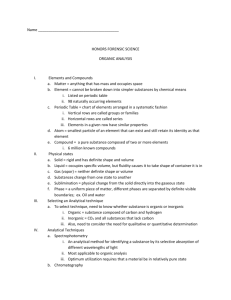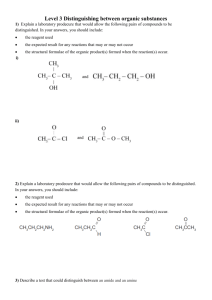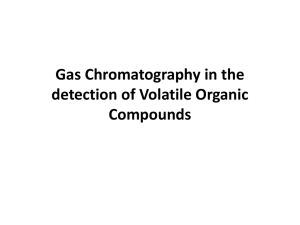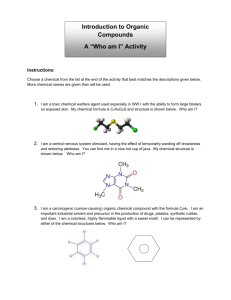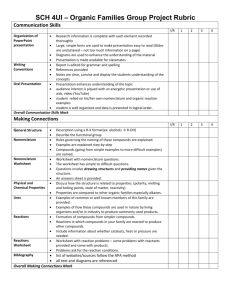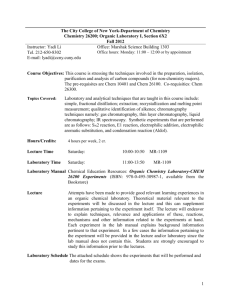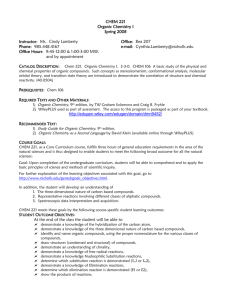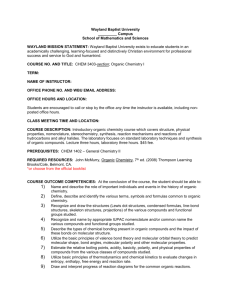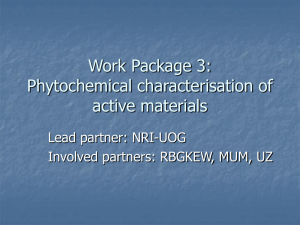Intro to Analytical Chemistry
advertisement
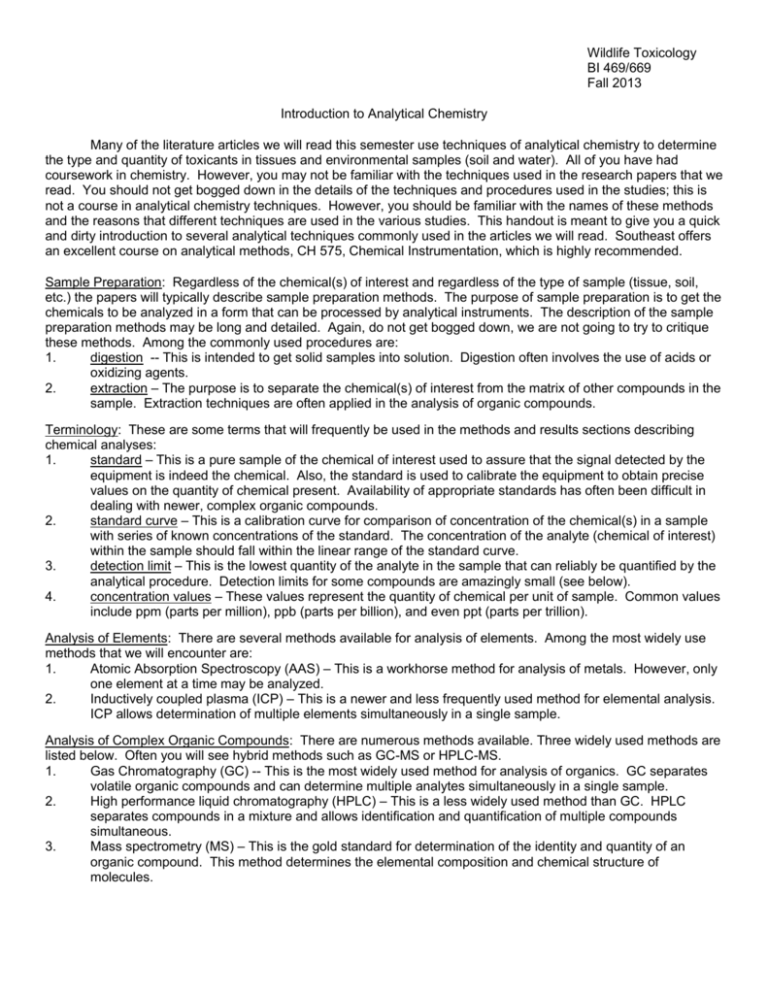
Wildlife Toxicology BI 469/669 Fall 2013 Introduction to Analytical Chemistry Many of the literature articles we will read this semester use techniques of analytical chemistry to determine the type and quantity of toxicants in tissues and environmental samples (soil and water). All of you have had coursework in chemistry. However, you may not be familiar with the techniques used in the research papers that we read. You should not get bogged down in the details of the techniques and procedures used in the studies; this is not a course in analytical chemistry techniques. However, you should be familiar with the names of these methods and the reasons that different techniques are used in the various studies. This handout is meant to give you a quick and dirty introduction to several analytical techniques commonly used in the articles we will read. Southeast offers an excellent course on analytical methods, CH 575, Chemical Instrumentation, which is highly recommended. Sample Preparation: Regardless of the chemical(s) of interest and regardless of the type of sample (tissue, soil, etc.) the papers will typically describe sample preparation methods. The purpose of sample preparation is to get the chemicals to be analyzed in a form that can be processed by analytical instruments. The description of the sample preparation methods may be long and detailed. Again, do not get bogged down, we are not going to try to critique these methods. Among the commonly used procedures are: 1. digestion -- This is intended to get solid samples into solution. Digestion often involves the use of acids or oxidizing agents. 2. extraction – The purpose is to separate the chemical(s) of interest from the matrix of other compounds in the sample. Extraction techniques are often applied in the analysis of organic compounds. Terminology: These are some terms that will frequently be used in the methods and results sections describing chemical analyses: 1. standard – This is a pure sample of the chemical of interest used to assure that the signal detected by the equipment is indeed the chemical. Also, the standard is used to calibrate the equipment to obtain precise values on the quantity of chemical present. Availability of appropriate standards has often been difficult in dealing with newer, complex organic compounds. 2. standard curve – This is a calibration curve for comparison of concentration of the chemical(s) in a sample with series of known concentrations of the standard. The concentration of the analyte (chemical of interest) within the sample should fall within the linear range of the standard curve. 3. detection limit – This is the lowest quantity of the analyte in the sample that can reliably be quantified by the analytical procedure. Detection limits for some compounds are amazingly small (see below). 4. concentration values – These values represent the quantity of chemical per unit of sample. Common values include ppm (parts per million), ppb (parts per billion), and even ppt (parts per trillion). Analysis of Elements: There are several methods available for analysis of elements. Among the most widely use methods that we will encounter are: 1. Atomic Absorption Spectroscopy (AAS) – This is a workhorse method for analysis of metals. However, only one element at a time may be analyzed. 2. Inductively coupled plasma (ICP) – This is a newer and less frequently used method for elemental analysis. ICP allows determination of multiple elements simultaneously in a single sample. Analysis of Complex Organic Compounds: There are numerous methods available. Three widely used methods are listed below. Often you will see hybrid methods such as GC-MS or HPLC-MS. 1. Gas Chromatography (GC) -- This is the most widely used method for analysis of organics. GC separates volatile organic compounds and can determine multiple analytes simultaneously in a single sample. 2. High performance liquid chromatography (HPLC) – This is a less widely used method than GC. HPLC separates compounds in a mixture and allows identification and quantification of multiple compounds simultaneous. 3. Mass spectrometry (MS) – This is the gold standard for determination of the identity and quantity of an organic compound. This method determines the elemental composition and chemical structure of molecules.
